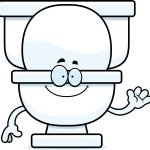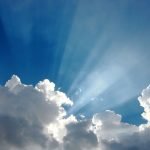Entangling Poetry and Medicine: The Rise of the Medical Humanities
Education
David J. Schleich, PhD
There are observers who conclude that what is at work these days in medicine, when we see “medical humanities” curriculum popping up as part of allopathic medicine’s recent efforts to be less mechanistic, is a type of disruption. This new interest may be less about disruption than about the assimilation of new knowledge potentially incubating a change in philosophy. I fear, however, that this process may be at the risk of diluting the nature and purpose of the thing being assimilated. In this connection and from my perspective, being a lover of literature (a mainstay of the humanities), poetry and medicine may have something in common. But first, let’s consider the habit of allopathic medicine assimilating every good thing in its path.
Even though there is very little that biomedicine could teach naturopathic medicine about prevention and holism, the recent attention in the allopathic sector to developing a more inter-professional and co-operative “integrative medicine” approach might, after all, be more about incorporating what is out here and chunking that back into their market share.
Roszak described beautifully this worrisome process of assimilation way back in 1968 in The Making of a Counterculture. That book’s theme zeroed in on European and North American youth counterculture at the time. Roszak described how, as the larger society’s response and strategy to such robust rejection of the mainstream culture, large corporations and political entities routinely appropriated and reframed the most persistent of the changes in play, removing competition and counterpoint. So it goes, alas, with the new lingo of “integrative medicine.” The new words (eg, holistic, integrative, natural) are easy to mouth, but the gulf is nevertheless wide between what allopathic medicine means by “prevention” and what naturopathic medicine means and has meant for a long time by the same term. The former usually means more tests sooner. The latter means more commitment of healthy lifestyle over the long term, undertaken well before a disease presentation. It means less reliance on an external directive about the responsibility one has for his or her own health.
Overcoming the Rift
There is a similar philosophical (and thus linguistic) gulf between the science of medicine and the art of medicine, manifesting these days as a rift between medicine and the humanities in terms of their value as cooperating disciplines. In this regard, C.P. Snow was spot-on back in 1959 in his famous “Two Cultures” Rede Lecture, when he described the “mutual lack of sympathy and appreciation” that existed between “literary intellectuals” and “natural scientists,” for example. In the field of medicine, that cleft shows up as an important tension among medicine, the social sciences, and the humanities.
We keep hearing about that rift, but broadly in medicine there is a new accord emerging, all about how to approach treatment. It emerges within the interprofessional conversation about social determinants, mind-body medicine, holism, and integration. Having a closer look at the ensuing entanglement of medical science with humanities requires patience, though. It also demands that we not begin with the assumption that biomedical science, rooted epistemologically in the discipline of biology, can define and predict health more accurately than we have been doing for decades. After all, we have included psychosocial variables in our understanding of disease susceptibility from the beginning. Factor in increasingly effective tools such as cybernetics, systems theory, biosemiotics, information theory, and complexity sciences, and the future isn’t what it used to be.
When those of us in the naturopathic medical education field attempt to situate those social determinants – or, more precisely, the political, cultural, economic, and social problematics of health – inside broader, longer cultural parameters, we get it that biomedicine professionals are already well aware of the limitations of reductionism. Orthodox biomedicine practitioners are less and less comfortable with where they are located on the wellness continuum. They know that rational medicine (some say, arising from Laennec’s stethoscope and the emergence of the “objective physician” and accelerating quickly into an era of pathology detection whose tools and techniques sprinted forward with chemical analysis, antibiotics, ECGs, MRIs, CTs, and so on) can no longer depend on what Foss, back in 2002, explained as the “interconnectedness of things” or the “holism” of things. (Foss, 2002, p.8)
Emergentism & Reductionism
Foss also went on to point out, The explanations [of these disciplines] tend to be loop-structured and feature self-amplifying upward and downward mutual causation (emergentism), rather than upward causation alone (reductionism). (p.8) What has shifted, ironically, is due in part to the abundant, new information available through the increasingly reliable and more precise instrumentality of systematic heuristic, scientific inquiry. So, there you have it – something the naturopathic doctor has known all along, and which was stated so presciently by Foss as interest in “complementary and alternative medicine,” accelerated in the early years of the first decade of our new century:
In the prevailing medical model mind and body are essentially separated. Considered scientifically, the patient has no self. The subject of treatment and cure is the diseased body –medical science. The subject of compassion and care is the ill person – medical art – care for the unavoidable human accompaniments of disease, such as anxiety, pain, and discomfort.
(Foss, 2002, p.9)
In this regard, there is a remarkable group in the United Kingdom called the “Centre for Medical Humanities,” that really understands this dilemma. Their “Arts in Health” publications and data banks are refreshing, current, and invitational. Have a look at Mike White and Mary Robson’s “Common Knowledge” repertoire, focused on developing research-guided arts in health projects in healthcare settings, schools, and communities. Also emerging from this center of thinking and action about the humanities and the arts in medicine is The Edinburgh Companion to the Critical Medical Humanities (Whitehead & Woods, 2016). This impressive 36-chapter collection is all about the field of so-called “medical humanities,” dialing into ethics, education, experience, and empathy (better known as the 4 “e’s” of the medical humanities).
And, at the University of Oxford we discover a significant forum for medical humanities already in place. Half a decade back, St Anne’s College partnered with the Wellcome Trust (the UK’s largest non-governmental source of funds for biomedical research) to launch its Centre for Personalized Medicine, focusing on medicine, genomics, law, economics, and ethics.
A related publication, Medical Humanities, featured in its first half-dozen issues pieces on medicine and the arts, medicine as an art and a science, the existential focus of clinical medicine, and, interestingly (but not surprisingly, given the momentum of this interest among healthcare professionals), the extent of chaos theory’s relevance to medicine. The literature of “medical humanities” is already rich.
Belinda Jack, discussing Medical Humanities (the publication), points out a “cultural studies” feature, as a case in point, “drawing on fine art, literature, history and philosophy to discuss a range of conditions and topics such as anorexia nervosa, ageing, body image and distinguishing patients as persons.” (Jack, 2015) Instead of this kind of work being subservient to mainstream medicine, a valuable entanglement is occurring.
As this academic and professional conversation evolves, I have benefitted from some recent workshops, in which some of the participants blustered antagonistically, dismissing “the lot” (of humanities, arts, and social-science factors in diagnosis, prognosis, and eventual treatment) as “near science” and “lacking scientific validation.” In this important dialogue, such labels were being tossed out in order to challenge those of us who welcome – and deem possible – the emerging, collaborative relationships.
Within such “ambiguous and risky intellectual space” (Whitehead & Woods, 2016, p.38), though, the pivots are quite beautiful. They remind me of so many dozens of such conversations which have been the norm in naturopathic education for as long as I have been a part of this community. Naturopathic doctors were savvy about social determinants in their practices long before that became part of the mainstream menu. In any case, topics abound where “medical humanists” gather: “mind, imagination, affect,” “health, care, citizens,” “the body and the senses.”
Fostering Interdisciplinary Research
On the other side of the world, at the University of Hong Kong, in the Li Ka Shing Faculty of Medicine, the Centre for the Humanities and Medicine has been active for almost a decade in fostering interdisciplinary research and teaching focused on: “the challenges posed by the translation of biomedical technologies into society; the relationship among disease, health, culture and society; and the humanization of our understanding and practice of medicine.” (Centre for the Humanities and Medicine) The Li Ka Shing Faculty of Medicine has exemplary practices in cross-listing humanities modules into the clinical curriculum (such as history, literature, philosophy, sociology, visual arts, religious studies, ethics, and law). The notion of “physician heal thyself” is sensitized into the work assignments and expected outcomes of the faculty, systematized in human resource practices and accountabilities, and underscores the importance of human and humane aspects of medical practice. (Centre for the Humanities and Medicine; Medical Humanities)
Meanwhile, back here in America, the Mayo Clinic, the Yale School of Medicine, UNC-Chapel Hill (where one can earn a degree in “literature, medicine and culture”), and many other mainstream, more conventional university and research and healthcare institutions are paying attention to this powerful equation in the preparation of medical professionals.
Some may contend that this new interest in the idea that medicine is an art too, and that the therapeutic value of the humanities in health and healing, are perhaps not so new. After all, Hippocrates taught us a few millennia ago that “wherever the art of medicine is loved, there is also a love of humanity.”
The richness of the humanities (philosophy, literature, religion, art, music, history, language) is daunting, and even more overwhelming in prospect is the challenge of using the humanities therapeutically. Generally understood to be the study of how people process and document human experience, there is growing awareness that the humanities use methods that, although primarily critical or speculative, have a persistent personal and community historical dimension. This compares with the generally empirical approach of the natural sciences and the biology-based medical sciences. The key question of the humanities disciplines is: what does it mean to be human?
David Behling (2012) puts the continuum this way: “the windows on the human experience opened by the humanities reveal many different kinds of people and ways of thinking about life, the universe and everything. I think they teach us how to be humane — how to be good people — wherever we live and whatever we do.”
No matter what corner of the abundant pathways, corners, and vistas of the humanities, Belinda Jack observes that whatever content or form in the humanities we gravitate toward as part of an overall healing strategy (say, reading great poetry, for example, whose succinctness and metaphorical power make for engagement), there are elements of the humanities which act like medicine in the end. (Jack, 2015)
It’s not surprising, then, that the National Association for Poetry Therapy self-describes as “a community of healers and lovers of words.” Depicting “poetry therapy” as a “holistic approach,” the Association explains that poetry therapy “respects the various links of wellness, with its attentiveness to body, mind and spirit” (National Poetry Association)
In this regard, Jack writes:
Reading the poem we are no longer alone, rather we are in touch with the poet’s humanity. And the space the loss has left has been filled – by the poem. The act of recognition of truth fills the space, in some small but fundamentally important way. Faced with some of life’s most painful moments poetry can reassure us that we are not alone – others have suffered too. But a great poem also allows us to make sense of feelings that might otherwise be a searing amorphous mass somewhere deep inside us. Great poetry makes us understand the only half-understood; in that understanding comes relief, and it can feel very physical. This is art acting as a medicine.
(Jack, 2015)
References:
Whitehead, A. & Woods, A., Eds. (2016). The Edinburgh Companion to the Critical Medical Humanities. Edinburgh, Scotland: Edinburgh University Press. Review of the book available at: http://centreformedicalhumanities.org/edinburgh-companion-critical-medical-humanities-reviewed-dr-stella-bolaki/.
Behling, D. June 5, 2012). On Studying the Humanities: What Does It Mean to Be Human? Available at: https://www.huffingtonpost.com/david-behling/humanities-majors_b_1569600.html. Accessed May 13, 2018.
Centre for the Humanities and Medicine. The University of Hong Kong. Available at: http://www.chm.hku.hk. Accessed May 12, 2018.
Centre for the Humanities and Medicine. The University of Hong Kong. Medical Humanities. Available at: http://www.chm.hku.hk/medicalhum.html. Accessed May 12, 2018.
Foss, L. (2002). The End of Modern Medicine. Albany, NY: SUNY Press.
Jack, B. (January 2, 2015). The rise of the medical humanities. Times Higher Education. Available at: https://www.timeshighereducation.com/features/the-rise-of-the-medical-humanities/2018007.article. Accessed May 12, 2018.
The National Association for Poetry Therapy. Available at: http://poetrytherapy.org/. Accessed May 12, 2018.
Image Copyright: <a href=’https://www.123rf.com/profile_fikmik’>fikmik / 123RF Stock Photo</a>
 David J. Schleich, PhD, is president and CEO of the National University of Natural Medicine (NUNM), former president of Truestar Health, and former CEO and president of CCNM, where he served from 1996 to 2003. Previous posts have included appointments as vice president academic of Niagara College, and administrative and teaching positions at St. Lawrence College, Swinburne University (Australia) and the University of Alberta. His academic credentials have been earned from the University of Western Ontario (BA), the University of Alberta (MA), Queen’s University (BEd), and the University of Toronto (PhD).
David J. Schleich, PhD, is president and CEO of the National University of Natural Medicine (NUNM), former president of Truestar Health, and former CEO and president of CCNM, where he served from 1996 to 2003. Previous posts have included appointments as vice president academic of Niagara College, and administrative and teaching positions at St. Lawrence College, Swinburne University (Australia) and the University of Alberta. His academic credentials have been earned from the University of Western Ontario (BA), the University of Alberta (MA), Queen’s University (BEd), and the University of Toronto (PhD).









